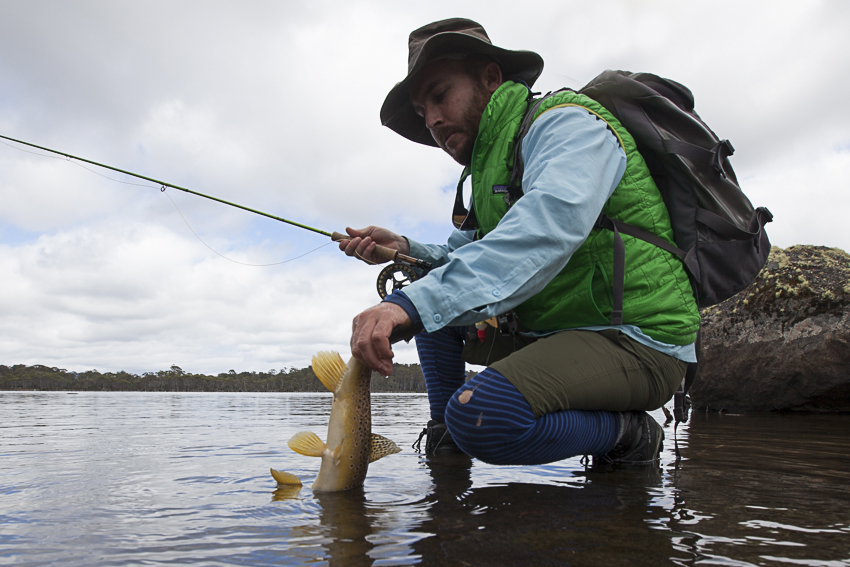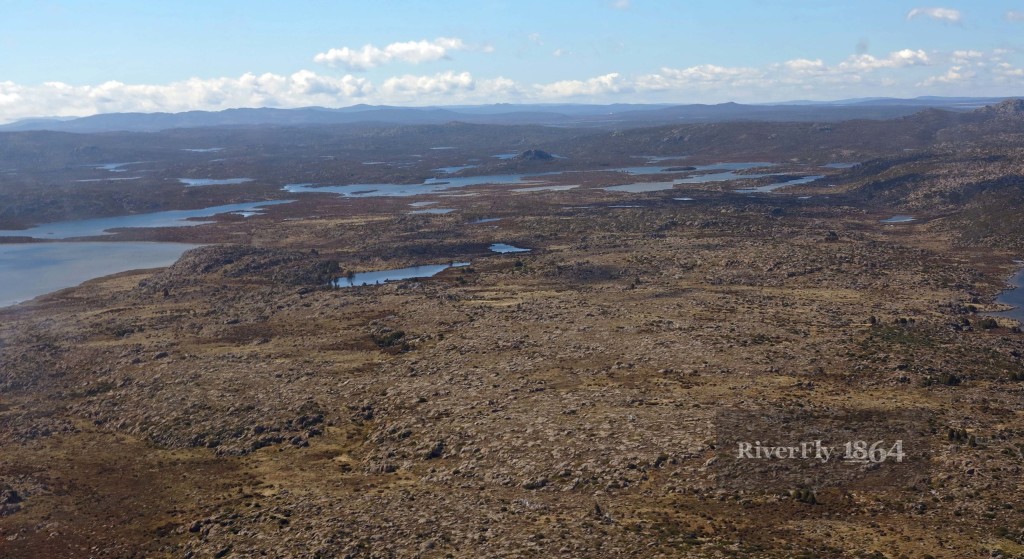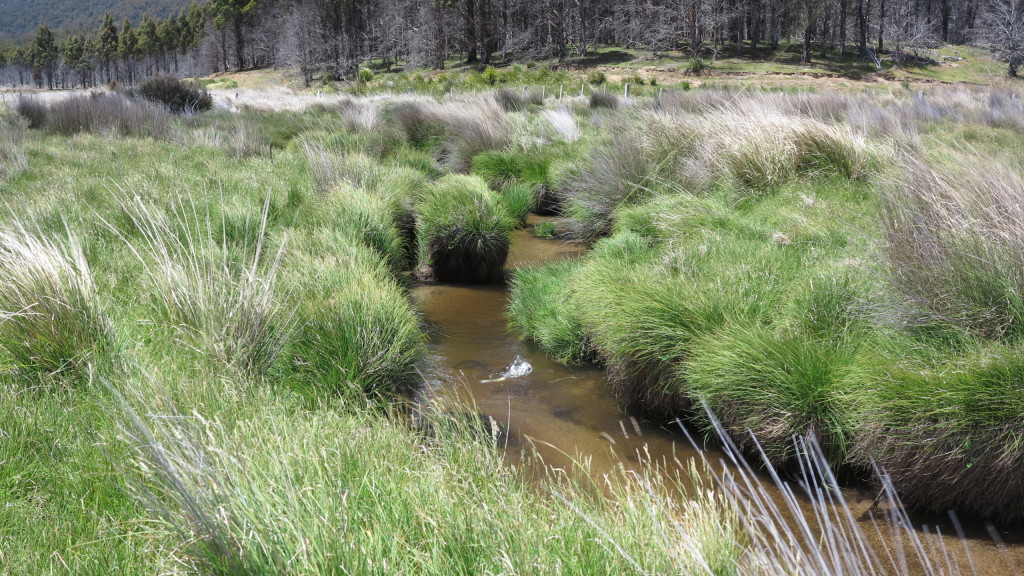Fires, drought, and great trout. The Tasmanian fly fishing season wrap-up!
What a strange season of weather. It’s been labelled ‘the green drought’ in Tassie, after a record dry spring and autumn, and an ok summer of rainfall. The El Nino weather cycle also resulted in some mixed fishing for the wider angling community, but here are some highlights and lowlights which should lead you some great destination tips for next season.
Highlights
The highlights without doubt were river fishing from October to December, and sight fishing the Western Lakes from November to the end of February.
The South Esk fished really well up and till December, and then again during February once the big summer rain event flushed through. Best flies were un-weighted nymphs (sight-cast at fish), and the Spinner Damsel dry fly.
It was great to see the upper Meander and the greater catchment bounce back with excellent fishing this season, and it seemed the higher up the catchment you went the better it got. Next door on the Mersey, and anyone who experienced the fishing pre-Christmas, or from March till now will know why this has developed into the best river in Tasmania.
Average sizes were good in the rivers this year, as were general fish numbers. Mayfly and caddis hatches were slightly down on normal, but terrestrials had a strong year.
Up onto the Central Plateau, and we had our best ever season in the wilderness Western Lakes. Based from our wilderness huts, we had sight-fishing to tailers consistently from early November right through to the end of February, along with some spinner and jassid fishing thrown in to the mix. The average size was just shy of three pounds, and close to twenty fish were lost that exceeded five pounds. They were breaking 6lb tippet!
Among the popular easy-access lakes, Four Springs, Penstock, Little Pine, Bronte and Dee Lagoon also had good to great seasons, and are in good shape for next season.

Western Lakes trout – pic by Peter Morse
Lowlights
Lots of anglers would be aware of the extremely low-water levels in many of our Hydro impoundments. At this stage Arthurs Lake and Great Lake are still quite healthy, and producing beautiful fish, but there is a real risk that if Great Lake drops any further, damage will be done. The rainbow on the horizon is that a solid five days of significant rains are forecast for the following week, which should hopefully begin the winter re-filling cycle of Great Lake. It was also nice to read that the monster El Nino is on its way out, and more normal rainfalls are expected to head our way.
On the river front, hydro-impoundment tailwaters such as Brumbys Creek and the Lower Macquarie, along with the Macquarie River and Lake River also had a poor season. The Tasmanian rivers in general were quite hard during January and early February due to low water flows, but these have all bounced back, and autumn fishing and fish condition have been good to great.
Fire rejuvenation
More than seventy fires burned through the Tasmanian wilderness last January, sparked by dry-lightning storms. We all feared the worst for our ancient high-country (which includes our Western Lakes fishery), but I was lucky enough to survey the damage recently, and found good news. On the edge of the Western Lakes, Lake Bill and Mackenzie formed the epicentres of two of the worst of the January fires. Due to a lot of extremely hard work and good luck, these fires appeared to have spared the vast majority of the ancient fire-intolerant bushland, sticking to mainly heath, buttongrass and eucalypt forests. There are a few exceptions, including a small stand of pines on the way into the Blue Peaks fishery (Blue Peaks itself was spared from any fire), a large tract north of Lake Mackenzie, and another small patch of pine between Lake Bill and Louisa. What was brilliant to see was very healthy buttongrass plains, already springing back to life in verdant greens, even in places such as Lake Bill itself.

Blue Peaks, spared from major fires.
Best three flies for season 15/16
So what were our favourite flies for the season? Here they are:
- The Spinner Damsel. This damsel imitation has been one of our secret guiding flies for the past couple of seasons, but after a lot of testing, we decided to tie these for the shop this season. Not only did it re-affirm as a great damsel pattern, it’d proved itself as a brilliant hatch-breaker, perfect for the hardest-to-fool trout.
- The Fastwater Dun. It’s a perennial favourite, and one of our original 1864 flies, but it continued to prove its versatility again this season. It was actually one of our best tailing trout flies!
- Glister Parachute Coachman. This was an old favourite that we forgot about for the past few seasons, but brought back on board as a go-to creek fly. The browns of the north-east creeks couldn’t get enough of it!
All flies are tied in Tasmania and available in store, and did you know we also tie almost any pattern to order?

End of season sale
We’ve added Simms, Scott, Lamson, Airflo and Trouthunter to our existing range from Patagonia, Sage, Redington, Rio and Orvis during the past few months. So to clear the decks for the complete new ranges due in July, we are running specials prices on some of our range. These include 20% off floor stock of 2015 Patagonia waders and boots, current Orvis Sonic Seam waders, and selected Orvis reels (up to 30% off). We’ve also got an ex-guiding Sage ESN nymphing rod on sale, as well as one remaining Sage Grace rod.
As the brown trout season comes to an end, you’ll still find us fishing the classified rainbow waters, the Derwent Estuary, and East Coast. But it is a great opportunity for us to say thank you to all of our guiding and shop customers during the 2015/16 season!
